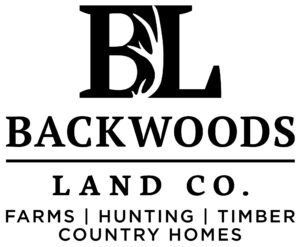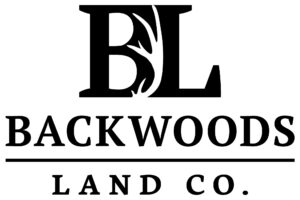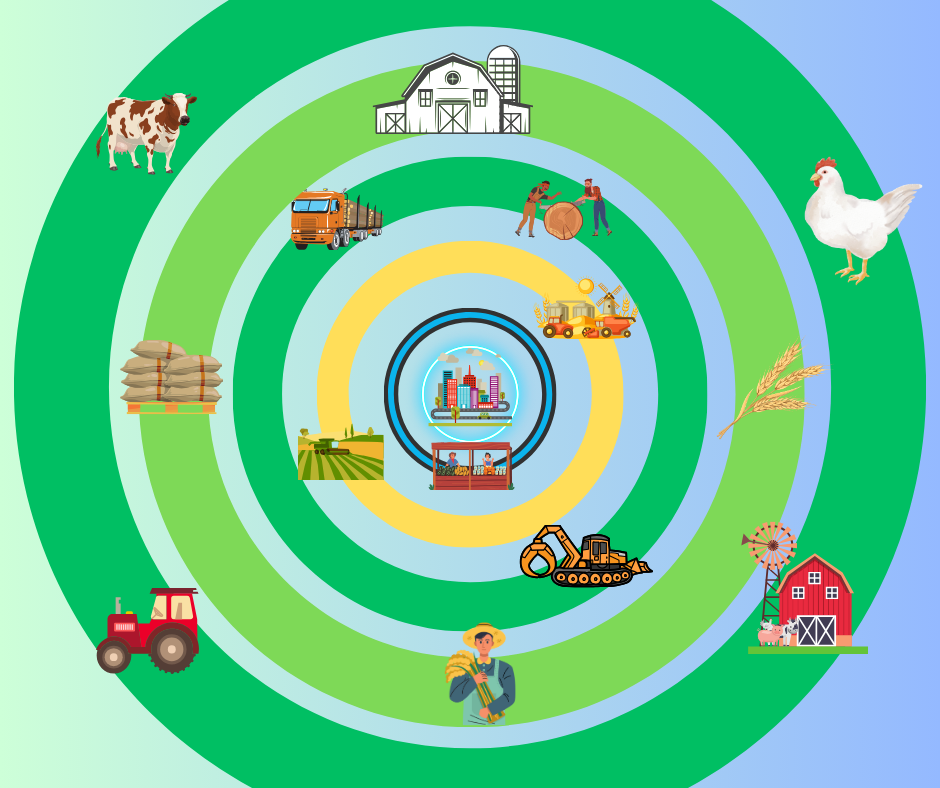Von Thünen’s Model and its Usefulness in Real Estate Analysis
Picture this: a long time ago in Germany, there was a farmer and economist named Johann Heinrich Von Thünen. He lived in a time when farming was rapidly. People were moving away from old-style farming and starting to sell their products in markets. Von Thünen was curious about how farmers could make the most money by using their land wisely.
Von Thünen’s model, developed by the German economist Johann Heinrich von Thünen in the early 19th century, is a seminal concept in the field of agricultural and land use economics. While originally designed to explain agricultural land use patterns, this model has found applications in various disciplines, including real estate appraisal. This article explores how Von Thünen’s model can be useful in the context of real estate appraisal and other modern analysis concepts of land use.
Understanding Von Thünen’s Model
Von Thünen’s model revolves around the concept of land use and spatial distribution based on transportation costs. The central premise is that land use decisions are primarily influenced by proximity to markets and the cost of transportation. In his model, Von Thünen envisioned a hypothetical isolated city surrounded by a circular region of agricultural land, where different types of crops and land uses are arranged concentrically based on transportation costs.
The Isolated City
Von Thünen’s model starts with the assumption of a central city or market, which serves as the focal point for economic activity.
Land Use Zones
Land uses are organized in concentric rings around the central city. The specific type of crop or land use in each ring is determined by the cost of transportation to the city. The most profitable crops or land uses are located closest to the city, while less profitable ones are placed farther away. Think of this place as having rings around the city, like the rings on a bullseye. Each ring is for different types of farming, like growing crops or raising animals.
Transportation Costs Transportation costs increase with distance from the city. This cost gradient is crucial in determining which crops or land uses are economically viable at different distances from the city. If you’re close to the city, it’s easier to sell your stuff, so you might grow things that need more care. But if you’re far away, you might grow things that don’t need as much attention.
Real Estate Appraisal and Von Thünen’s Model
Real estate appraisal involves determining the value of a property based on various factors, including its location, land use, and market demand. Von Thünen’s model can be applied to real estate appraisal in several ways:
Von Thünen’s model provides a framework for understanding how proximity to a central market affects property values. Real estate appraisers can use this concept to assess the desirability of a location and its potential for future development. Properties are historically located closer to major economic centers are often more valuable due to easier access to services and markets. However, Over the years, urban areas have experienced exponential population growth, leading to urban sprawl and the expansion of metropolitan regions. As cities expand outward, the dynamics of location desirability become more complex. Peripheral areas, once considered less valuable due to their distance from the central market, may now gain prominence as urban boundaries expand. This expansion, driven by factors like housing demand and infrastructure development, challenges the traditional application of Von Thünen’s model.
Another critical factor reshaping location analysis is the prevalence of crime and safety concerns. In many cases, areas closer to central markets have experienced higher crime rates, prompting potential residents and businesses to seek safer, albeit more distant, alternatives. This shift can lead to a reevaluation of property values, with safety considerations outweighing proximity to the central market
Land Use Planning
Real estate appraisers can consider the historical and predicted land use patterns in an area based on Von Thünen’s model. This can help in evaluating the potential demand for various types of properties. For example, if a region is transitioning from agriculture to residential development, understanding this shift can inform property appraisals.
Transportation Infrastructure
The cost of transportation plays a critical role in property values. Proximity to highways, public transportation, and other infrastructure can significantly impact property appraisals. Von Thünen’s model underscores the importance of considering transportation costs when appraising real estate.
Market Analysis
Real estate appraisers can analyze the accessibility of properties to different markets using the Von Thünen framework. This analysis can help in estimating the potential rental or sale value of a property, as properties closer to lucrative markets tend to command higher prices keeping shifting demands in mind.
Rural and Agricultural Land
In rural areas, the model can be used to assess the value of agricultural land based on its proximity to markets and the type of crops or land use in practice. This can guide decisions related to land purchase, leasing, or conversion.
Geographic Information Systems
Geographic Information Systems (GIS) technology is a powerful tool for real estate analysis, allowing professionals to integrate spatial data into their decision-making processes. Von Thünen’s model can be applied within a GIS framework to assess real estate values and land use patterns. Here’s an example of how to use this model for GIS-based real estate analysis:
Scenario: Imagine you are a real estate developer interested in acquiring land for a new residential project in a suburban area near a major city. You want to use GIS to determine the most suitable location for your development based on Von Thünen’s model.
Step 1: Data Collection
Market Data: Obtain data on the central city’s economic activities, employment centers, and population growth projections. This can be collected from government sources, economic development agencies, and census data.
Transportation Infrastructure: Gather GIS data on existing transportation infrastructure, including highways, major roads, public transit routes, and airports. You can access this data from local transportation departments or open data sources.
Land Use Data: Acquire land use data for the study area. This data should include information on existing residential, commercial, agricultural, and industrial land uses.
Step 2: GIS Analysis
Market Proximity: Use GIS to create a buffer zone around the central city, with varying distances representing the zones in Von Thünen’s model. For example, you might have concentric buffers at 5 miles, 10 miles, 15 miles, and so on.
Transportation Costs: Calculate transportation costs or travel times from each point within these buffer zones to the central city using GIS network analysis tools. Consider factors like road quality, traffic congestion, and public transit availability in your cost calculations.
Land Use Overlay: Overlay the land use data onto the buffer zones. This will help you determine the predominant land use types within each zone.
Step 3: Analysis and Decision-Making
Market Demand: Analyze the market data to understand the current and future demand for residential properties in the central city and its surrounding areas.
Transportation Costs: Assess the transportation costs or travel times for each buffer zone. Consider the model’s principle that transportation costs increase with distance from the central city.
Land Use Suitability: Evaluate the suitability of land use within each buffer zone based on the model’s principles. For instance, if the model suggests that agriculture is more viable in the outer zones, but market demand is for residential properties, you may prioritize zones with a mix of agriculture and residential land.
Value Assessment: Combine the information on market demand, transportation costs, and land use suitability to estimate the potential value of properties within each buffer zone. Properties that align with market demand and have reasonable transportation costs are likely to be more valuable.
Location Selection: Based on the analysis, identify the buffer zone that offers the best balance between market demand, transportation costs, and land use suitability. This zone is likely to be the most suitable location for your residential development project.
By applying Von Thünen’s model within a GIS framework, you can make data-driven decisions in real estate development. GIS allows you to visualize and analyze complex spatial relationships, helping you identify the optimal location for your project while considering market dynamics and transportation factors.
Outlying Rural Development: Changes Since Von Thünen’s Model
Johann Heinrich von Thünen’s model, developed in the early 19th century, provided valuable insights into agricultural land use patterns based on transportation costs and proximity to urban centers. While his model remains relevant for understanding certain aspects of rural development, the world has undergone significant changes since his time. Here are some key ways in which outlying rural development has evolved since Von Thünen’s model was first introduced:
Technological Advancements
One of the most significant changes is the advent of modern transportation and communication technologies. The widespread availability of automobiles, improved road networks, and the rise of the internet have reduced the relative importance of transportation costs in land use decisions. As a result, rural areas are no longer as constrained by distance from urban centers, and economic activities can be more dispersed.
Urbanization and Suburbanization
The continued trend of urbanization and suburbanization has reshaped the rural landscape. Many rural areas have experienced population decline as people migrate to urban and suburban areas in search of better economic opportunities and amenities. This has led to changes in land use, with some rural regions becoming more residential or recreational in nature.
Diversification of Rural Economies
Rural economies have diversified beyond traditional agriculture. While agriculture remains important, rural areas now host a variety of industries, including manufacturing, technology, tourism, and renewable energy production. These new economic activities have transformed the rural development landscape, with different land use patterns emerging.
Land Conservation and Environmental Concerns
Environmental and conservation concerns have led to changes in land use practices in rural areas. Government regulations and incentives often encourage the preservation of open space, the protection of natural habitats, and sustainable land management. This has influenced the way rural land is used and developed.
Amenity-Based Development
Some rural areas have transitioned to amenity-based development, attracting residents and businesses due to their natural beauty, recreational opportunities, and quality of life. This form of development is less tied to traditional agricultural or industrial land use patterns and is driven by lifestyle choices.
Globalization
Globalization has increased the interconnectedness of rural areas with the broader world economy. Rural regions now participate in global supply chains, leading to changes in land use to accommodate export-oriented agriculture and manufacturing.
Infrastructure Investments
Public and private investments in rural infrastructure, such as airports, railroads, and broadband internet, have opened up new possibilities for rural development. These investments have improved connectivity and accessibility, reducing the isolation often associated with outlying rural areas.
Cultural and Demographic Shifts
Changes in demographics, with an aging population and an influx of younger generations with different preferences and lifestyles, have influenced rural development. These shifts have led to changes in housing preferences and the demand for services in rural areas.
In Summary
I have firsthand experience with Geographic Information Systems (GIS) and have noted similar patterns to Von Thünen’s model. However, the global landscape is evolving at an unprecedented pace, and although this model remains effective, it is continually adapting to the ever-changing dynamics of our world.
While Von Thünen’s model laid a foundational framework for understanding rural land use, the landscape of outlying rural development has evolved significantly since its conception. Modern factors like technological advancements, urbanization, economic diversification, environmental concerns, and globalization have all contributed to a more complex and diverse rural development pattern. These changes highlight the need for a more comprehensive and nuanced approach to understanding and planning for rural development in the 21st century.



